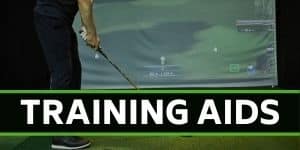READ THE LATEST IN
Tips & Guides
Improving your golf game requires more than just time on the course—it’s about understanding the nuances of strategy, technique, and etiquette. This page is packed with expert tips and detailed guides to help you refine every aspect of your play. Whether you’re a beginner looking to master the fundamentals or an experienced player fine-tuning your approach, these resources offer actionable advice that translates to results.
Learn how to read greens, prepare for corporate golf outings, or play confidently on private courses. Discover strategies for handling tricky situations, like hitting the wrong fairway, or the finer points of golf etiquette, such as playing through or celebrating a hole-in-one.
This page goes beyond basic instructions, diving into unique perspectives and advanced techniques to help you play smarter and with greater confidence. Each guide is written with the goal of making your time on the course more enjoyable, helping you approach every round with knowledge, skill, and poise.
Popular Tips & Guides Articles Include:
- The best golf tee time app, as tested by a golf pro. Includes how to use them to find cheaper rounds by comparing listings.
- Clint McCormick
- October 28, 2025
- Learn Pete Cowen’s short game secrets that helped major champions win. Discover his wedge system, bunker techniques, and practice drills you can use to save s
- Clint McCormick
- September 19, 2025
- Discover five of the best golf betting games, from Nassau and Skins to Wolf, Bingo Bango Bongo, and Vegas. Easy to learn, fun to play, and perfect for keeping e
- Clint McCormick
- September 19, 2025
- Master the art of classy golf heckling with timing tips, clever one liners, and crowd etiquette to keep the game fun, respectful, and memorable.
- Clint McCormick
- August 14, 2025
- A complete guide to golf gambling games. Includes descriptions of Skins, Wolf, Nassau, Vegas, and dozens more.
- Matt Callcott-Stevens
- September 18, 2025
- Golf has a reputation for being an expensive hobby reserved for the wealthy, but it doesn't have to be. With the right approach, you can enjoy the game without
- Clint McCormick
- August 14, 2025
- Discover why fights on golf courses are on the rise. From social media ego trips to overcrowded tee times, we break down what’s ruining golf’s respectful cu
- Clint McCormick
- August 14, 2025
- No matter where you play, whether it is a budget-friendly muni or a world-famous course, pace of play is every golfer’s responsibility. It is not about rushin
- Clint McCormick
- August 14, 2025
- See five of the most impressive golf trick shots of the year. . . and learn to do them yourself.
- Clint McCormick
- August 14, 2025
- See the golf tip that changed my game forever. This father's day, I'm thanking my dad for his practical golf advice.
- Brendon Elliott
- May 22, 2025
FOLLOW US
GET OUR LATEST UPDATES DIRECT TO YOUR INBOX – ENJOY SUBSCRIBER ONLY BENEFITS AND ENTER OUR GIVEAWAYS







